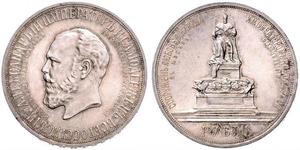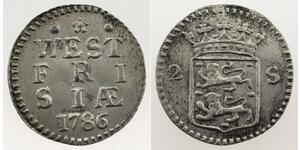(sold for $1.0)
1988, East Germany (DDR). Copper-Nickel 5 Mark "Saxonia Locomotive" Coin. UNC!
Mint Year: 1988 Reference: KM-120. Condition: A nice brilliant UNCirculated coin! Denomination: 5 Mark - Germany´s First Railroad / Saxonia locomotive Material: Copper-Nickel Diameter: 29mm Weight: 9.6gm
The locomotive Saxonia was operated by the Leipzig–Dresden Railway Company (Leipzig–Dresdner Eisenbahn-Compagnie or LDE) and was the first practical working steam locomotive built in Germany. Its name means Saxony in Latin.
The Saxonia was built by Johann Andreas Schubert. Schubert had been inspired by the English-built locomotive, Comet, procured for the LDE, and he analysed and improved on what he saw. He used the same dimensions but, unlike Comet, two coupled axles were driven, therefore providing increased tractive force, and a carrying axle was added at the back to improve ride qualities.
The development and construction of the locomotive was carried out in the Maschinenbauanstalt Übigau at Dresden, an engineering works that had been founded on 1 January 1837. From the beginning Schubert was the head of the company. The construction of the engine was a technical and economic risk for the firm. For a start, it had no technical experience at all; furthermore there were no orders for a locomotive.
The Saxonia was intended to open the Leipzig–Dresden railway, the first long-distance railway line in Germany, on 8 April 1839. But the English, who until then had a monopoly within the railway industry, begrudged success to Schubert and his locomotive.[citation needed] The first train to run on the railway was hauled by the two English locomotives Robert Stephenson and Elephant. The Saxonia – driven by its creator, Johann Andreas Schubert –- followed on behind.
The Saxonia clearly continued to be used successfully, however, because in 1843 it had clocked up 8,666 kilometres (5,385 mi). There is no definite information about its whereabouts, however, it must have remained in the LDE's fleet until 1856 because its name was not reassigned until then.
The Übigau works built a second locomotive of the same arrangement, named Phoenix, delivered 1840-04-12.
From a technical standpoint the Saxonia reflected in the main its English counterparts. Only a few details exist about the design of the boiler. The boiler barrel had rivetted longitudinal seams, the vertical boiler had a curved, cylindrical top. A flat plate on top of the vertical boiler provided a platform for the steam whistle and spring balance safety valve. On top of the front section of the boiler barrel was the tall, narrow steam dome. The grate was designed to be moveable.
The steam engine was designed as a two-cylinder inside drive with a simple inside lever valve gear (Hebelsteurung) without a steam expansion stage. The engine drove the second coupled axle.
Both coupled axles as well as the carrying axle were fixed rigidly into the frame. The wheel spokes were made of forged bar steel. Later cast wheel spokes were fitted. Because it had an inside drive the second axle had to be designed as a crank axle, which is remarkable, bearing in mind the manufacturing technology of that time. A technical innovation was the trailing axlewhich had been intended by Schubert mainly to improve the locomotive's riding qualities.It was subsequently determined to be superfluous and was removed in 1840. From 1842, however, the operation of twin-axled locomotives was banned on safety grounds, so the trailing axle had to be refitted. The brake was initially a screw-operated band brake which acted on the two driven wheels from the top. Because this did not prove suitable due to high wear and tear, it was later removed.
Only 1$ shipping for each additional coin purchased!

|
Posted by:
anonymous 2018-11-19 |
1 Ruble Russian Empire (1720-1917) Silver
group has 12 coins / 12 prices
⇑
2 Stuiver Netherlands Silver
group has 33 coins / 33 prices
⇑

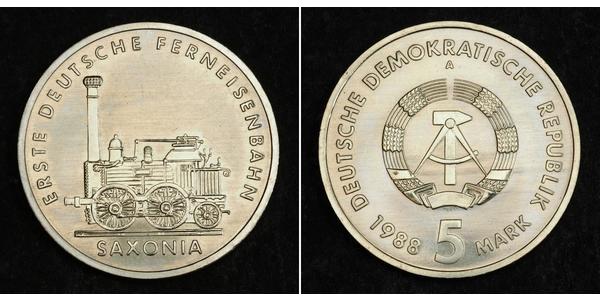






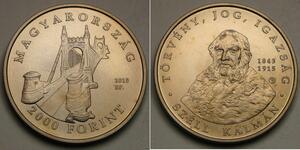




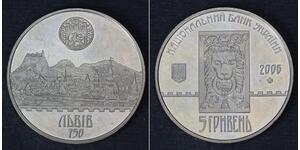

-300-150-72sKbzbis7EAAAFPBUQ1Mk0C.jpg)
